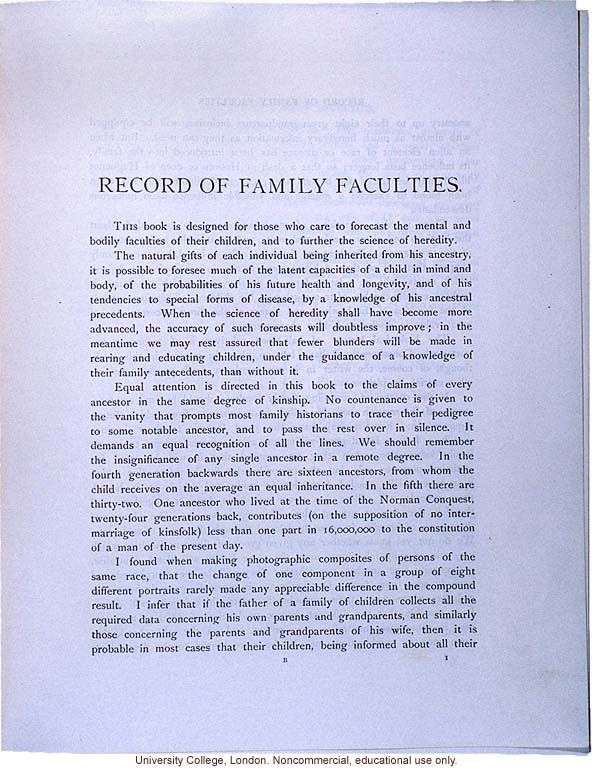Record of Family Faculties.
This book is designed for those who care to forecast the mental and bodily faculties of their children, and to further the science of heredity.
The natural gifts of each individual being inherited from his ancestry, it is possible to foresee much of the latent capacities of a child in mind and body, of the probabilities of his future health and longevity, and of his tendencies to special forms of disease, by a knowledge of his ancestral precedents. When the science of heredity shall have become more advanced, the accuracy of such forecasts will doubtless improve; in the meantime we may rest assured that fewer blunders will be made in rearing and educating children, under the guidance of a knowledge of their family antecedents, than without it.
Equal attention is directed in this book to the claims of every ancestor in the same degree of kinship. No countenance is given to the vanity that prompts most family historians to trace their pedigree to some notable ancestor, and to pass the rest over in silence. It demands an equal recognition of all the lines. We should remember the insignificance of any single ancestor in a remote degree. In the fourth generation backwards there are sixteen ancestors, from whom the child receives on the average an equal inheritance. In the fifth there are thirty-two. One ancestor who lived at the time of the Norman Conquest, twenty-four generations back, contributes (on the supposition of no inter-marriage of kinsfolk) less the one part in 16,000,000 to the constitution of a man of the present day.
I found when making photographic composites of persons of the same race, that the change of one component in a group of eight different portraits rarely made any appreciable difference in the compound result. I infer that if the father of a family of children collects all the required data concerning his own parents and grandparents, and similarly those concerning the parents and grandparents of his wife, then it is probable in most cases that their children, being informed about all their
B I
[end]


